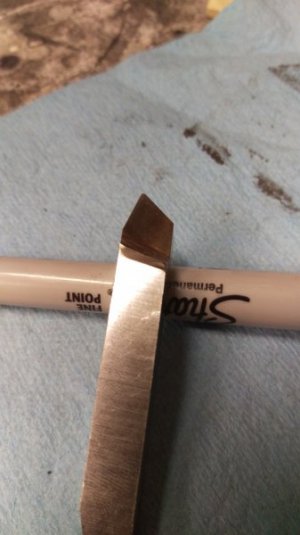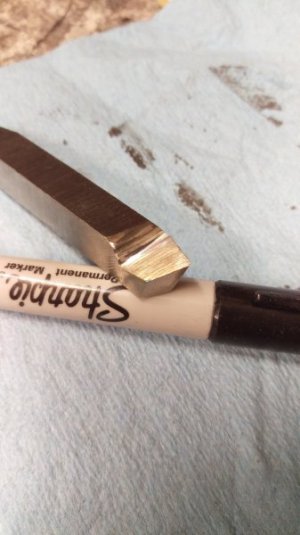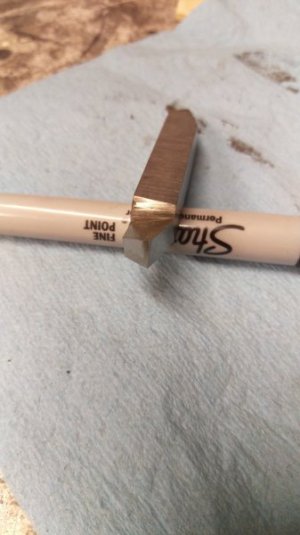I'm having trouble with my laptop. Hope this goes through.
This is a tool I share with others because it works for most things. I also use material-specific tools with the same general shape but with relief and rake angles that suit each material group. My stainless tool is different from my tool steel tool, etc. Each tool has relief and rake angles that are intended to reduce cutting forces or accommodate a characteristic of the material.
If you have time, read the articles I linked to in the original article. It will tell you what each angle on the tool does and how you can modify the tool to do what you want. For example, if you work with stainless steel you will find that it has a tendency to work harden due to high temps in the cut. Stainless likes more aggressive relief angles to cut well but if you also increase side and back rake the chip clearance is better. Since most of the heat in a cutting operation is in the chip, the faster you get the chips out the lower the cutting temps are and consequently the less work hardening occurs. In other words, you can use your tool angles to make the tool do what you want it to do.
Another example is aluminum, which tends to get hot when cut and then it gets "gummy" and can weld onto the tip of your tool. My tool has increased relief angles to penetrate faster and it has large (40 degrees!) rake angles to get the heat out of the work fast. As a result, I don't have any issues with chip welding. I also add more back rake and a more generous nose radius to improve finishing potential and my aluminum tool leaves a mirror finish, even on roughing cuts. This tool is amazing in aluminum.
The rationale for these tool angle changes is explained on page 5, post 137 of this thread:
http://hobby-machinist.com/threads/turning-tool-and-facing-tool-questions.36687/
As you learn how each material likes to be cut you will be able to adjust your tools to accommodate them. You just need to know what each angle does so you know what to change to get what you need.
Don't underestimate the value of cutting force reduction. You only have 3/4HP, which is not a lot of power. By prioritizing cutting force reduction your tools will enable your lathe to make cuts it may not be able to make with a standard tool. That is the beauty of HSS lathe tooling - you can modify it to extend your lathe's capabilities while enabling you to machine stuff more efficiently.




